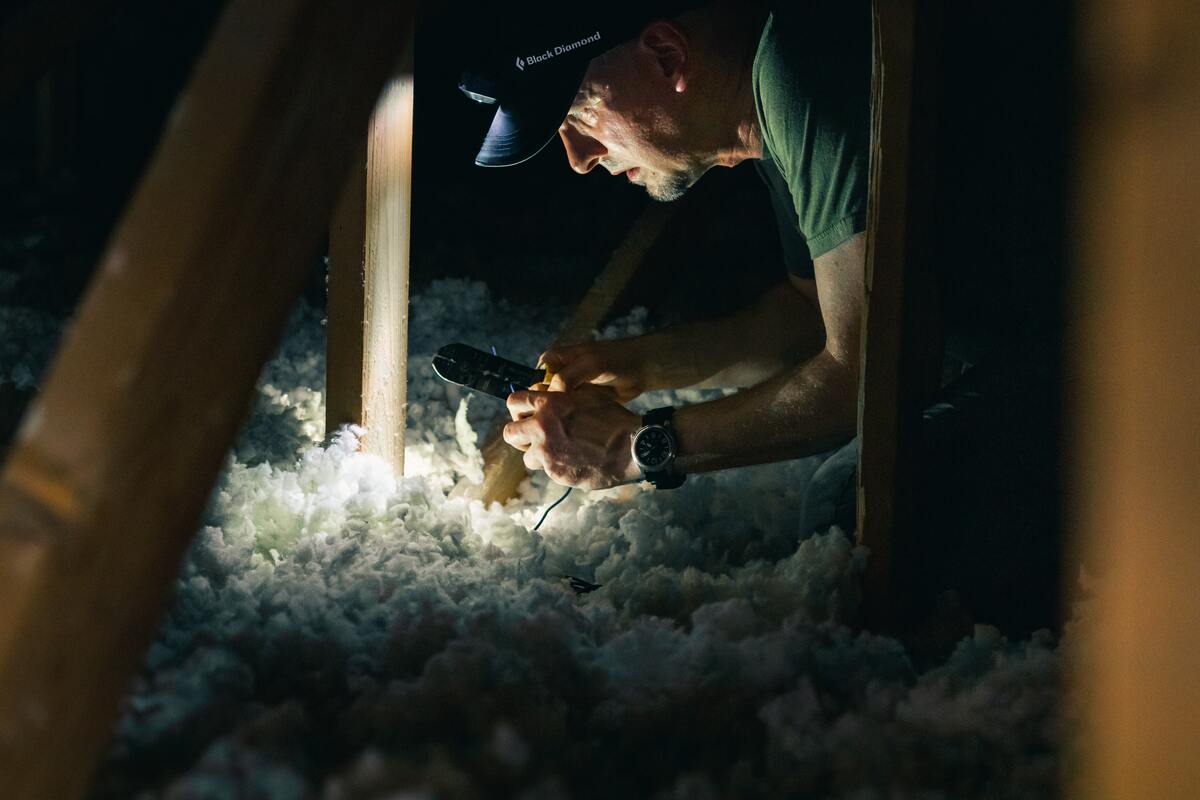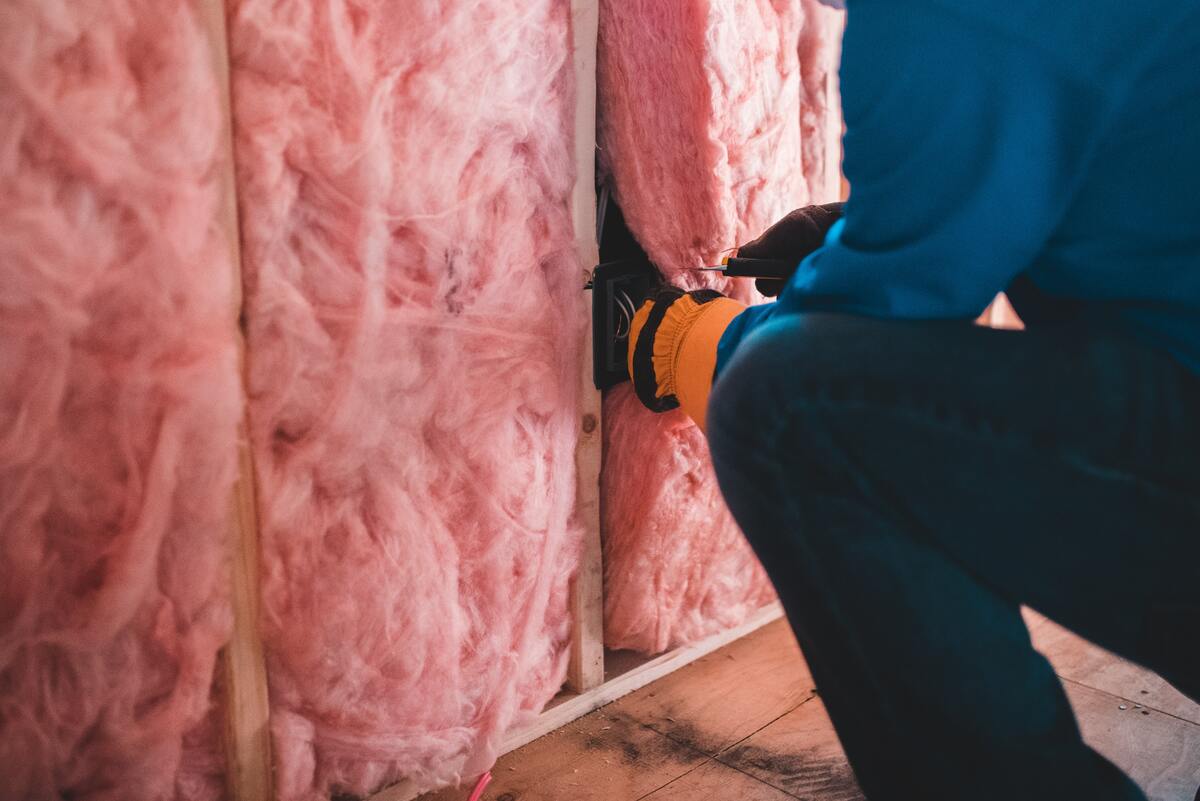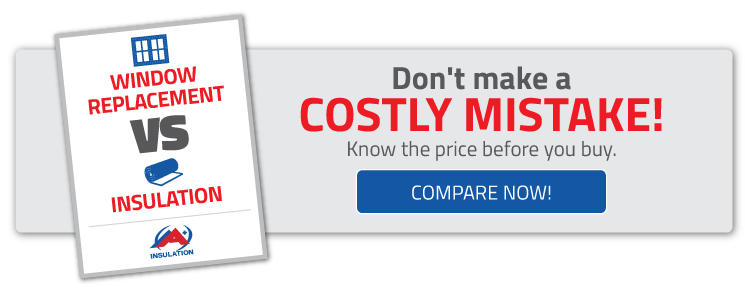
The U.S. Environmental Protection Agency estimates that the average homeowner can save about 15% on heating and cooling costs by insulating certain areas of their home, like the attic and crawl spaces.
Foam spray insulation is a great way to insulate your home and save money on your monthly energy bills. However, it’s also a very misunderstood product. There are many misconceptions about spray foam insulation. In this article, we will be exploring some of the most common ones and dispelling them with facts and figures.
Myth 1: Spray foam insulation is toxic
A common misconception about spray foam is that it contains dangerous chemicals. This myth can be largely attributed to one specific product: low-density, open-cell polyurethane spray foam insulation. The pressure necessary to spray this type of foam often releases low levels of chemicals into the air.
However, this low-density spray foam is not the only type of insulation available. High-density polyurethane and polyisocyanurate are two types of spray foam that release negligible amounts of chemicals into the air.
These types of insulation do not require the same amount of pressure, and only a small quantity is ever needed for a given job, making them a safe alternative to low-density insulation sprays.
Myth 2: Spray foam rots wood
When spray foam expands into an area that contains both wood and air, such as wall studs or rafters, it will sometimes cause the wood to rot. This is because the moisture within the wood is attempting to balance with the rapidly expanding foam.
If the area contains only low-density spray foam, this myth has some truth behind it. However, if high-density insulation is used, no rotting will occur.
Myth 3: All spray foam systems are the same
Some people assume that all spray foam insulation systems are similar in effectiveness and purpose. Different types of insulation serve different purposes and require specific types of equipment to install.
Generally speaking, there are two categories of spray foam: open-cell and closed-cell. Each type has its unique uses and benefits associated with it. Open-cell spray foam controls airflow and noise, so it is ideal for insulating an attic. Closed-cell spray foam is a better option for containing moisture, so it is best to insulate wall cavities or roofs.
The critical difference between open-cell and closed-cell insulation is the number of chemicals contained within the product. The chemicals in open-cell spray foam expand and then re-absorb into the air. Closed-cell insulation is denser and does not require as much pressure for spraying.
Myth 4: Spray foam is expensive
Some people think that only those with deep pockets can afford spray foam insulation. There is a common misconception that it is expensive to install, but this is not true. Spray foam insulation is much more cost-effective than other types of insulation because less product is used for a given job.
Low-density spray foam can be an expensive option but only when large quantities are needed.
Myth 5: Spray foam is dangerous to your health
It is easy to believe that spray foam insulation is terrible for your health because it sometimes contains harmful chemicals. The type of spray foam which emits hazardous gases is low-density polyurethane, and this kind should never be used for residential purposes.
However, high-density foam insulation does not release chemicals into the air during installation. When the proper tools and equipment are used, there is no hazard to using spray foam in your home.
Myth 6: Spray foam is just like any other insulation
There seems to be a misconception that spray foam insulation can be used alongside any other type of insulation. It seems logical to think that different types can work together without creating pockets where air can escape because it is ‘liquid’ insulation.
However, this idea could not be further from the truth – spray foam does not mix well with other types of insulation. To achieve maximum efficiency and get the most effective result, spray foam should be used on its own.
Myth 7: Spray foam will ruin my walls
When people think of renovating their home using spray foam insulation, they often assume that walls will have to be removed to install it. In some cases, this is necessary. Such as when insulating a wall cavity, for example.
However, in most cases, spray foam can be sprayed directly to the internal or external wall. Spray foam is one of the best options for insulating walls because it seals off air leaks much better than other materials.
Myth 8: Spray foam is the same as cement
In the world of spray foam insulation, it seems that cement is a dirty word. Some believe that spray foam and concrete are interchangeable materials – because both can be used as a building material – but this is not true either.
Cement has to be mixed with water before it is ready to use. Spray foam can be sprayed and applied in its raw form. Cement is also porous, so it does not insulate, and spray foam forms a solid barrier against air leaks.
Myth 9: Spray foam only comes in white
For those unfamiliar with spray foam insulation, it is easy to assume that the only available color for this material is white. Spray foam comes in various colors and can be dyed to suit your needs or preferences.
Spray foam insulation can even be color-matched to existing building materials, such as brickwork, which will help it blend in with its surroundings. Not only is spray foam available in a range of different colors, but it also comes in standard R-values, which are appropriate for most climates.
Myth 10: Spray foam is only for the bottom floor
This is a common misconception about spray foam insulation. Some believe that this material can only be used on the bottom floor. People assume that because spray foam insulation works so well at sealing air leaks, it can only be used in areas where air might escape.
Spray foam insulation is one of the best options for insulating any room in your home. Spray foam does not just work well with bottom floor living space – spray foam insulation has been used successfully to seal walls and roofs, as well as attics and under-floor areas.
Myth 11: Spray foam is just like bubble wrap
Some people consider bubble wrap and the like when it comes to insulation. This is a big misconception about spray foam insulation – that it can be used as efficiently as bubble wrap on your windows and walls.
Spray foam is an entirely different material with its own set of advantages and disadvantages. Bubble wrap is not a good insulator because it is porous, whereas spray foam forms an excellent barrier that cannot be easily penetrated by air or water leaks.
Myth 12: Spray foam does not work in cold climates
Some say that spray foam insulation is unsuitable for cold climates like most insulation products. The idea behind this myth is that because spray foam expands when it is heated, the product will break down when temperatures are low outside.
However, this is not true in most cases. Spray foam insulation can also work well in cold climates. This material has been used to insulate homes located in freezing conditions for many years.
Myth 13: Spray foam cannot be used in hot climates
Another misconception about spray foam insulation is that it is unsuitable for hot climates. The idea behind this myth is that because the material expands when it is heated, the product will break down in high temperatures.
While this may be true in some cases, you need to look at the specific insulation requirements of your home first. Spray foam is one of the best products for insulating homes in hot climates because it offers excellent thermal mass, which helps to protect the building from high temperatures.
Myth 14: Spray foam does not work on stucco
Another common misconception about spray foam insulation is that this material cannot be used on stucco-clad homes. Some say that because spray foam is so hard, it can damage the cladding of your home during installation.
However, spray foam works perfectly well with stucco. Many spray foam formulations were developed especially for exterior surfaces like tile and stucco. The foam adheres to the surface, protecting it from moisture and other elements.
Myth 15: Spray foam is not for modern homes
One final misconception about spray foam insulation is that this product is not suitable for modern homes. Because it is so rigid, the idea is that spray foam will not work in contemporary environments.
You can use spray foam insulation to protect your home no matter what type of design you have. Spray foam can be used on modern homes just as it can on colonial homes – the only factor to consider is the R-value which will best suit your needs.
Invest in spray foam insulation today
Spray foam insulation is a great way to save money on your monthly heating and cooling bills. Nevertheless, if you are not using this material correctly, it can be ineffective or even damaging to your building.
We hope that you will have more confidence in choosing the right product for your home by debunking some of these misconceptions about spray foam insulation.
If all of this sounds intimidating and you want help understanding the benefits of spray foam insulation, let us know at A+ Insulation.
A+ Insulation is a trusted home insulation contractor that’s been insulating homes and businesses in the Kansas City area since 2004. Contact us today and our team of experts is ready and waiting to discuss our services with you.




 as the primary method of insulation in a new home or business, as well as supplemental insulation. Spray foam is applied by spraying a polyurethane foam into walls and ceilings, where it then expands to form an airtight seal that is also moisture tight and also protects your home or business from pests, rodents, and mold damage. One of the best attributes of spray foam insulation is its ability to seal off small crevices that other types of insulation simply cannot reach which makes it
as the primary method of insulation in a new home or business, as well as supplemental insulation. Spray foam is applied by spraying a polyurethane foam into walls and ceilings, where it then expands to form an airtight seal that is also moisture tight and also protects your home or business from pests, rodents, and mold damage. One of the best attributes of spray foam insulation is its ability to seal off small crevices that other types of insulation simply cannot reach which makes it  air bubbles and creating an insulating effect that escalates and slows the heat exchange between surfaces.
air bubbles and creating an insulating effect that escalates and slows the heat exchange between surfaces.  At A+ Insulation, we install many kinds of home insulation. From fiberglass to cellulose to spray foam and batt style to BIBs (blow-in-blanket) to closed cell foam. We’d like to talk to you about spray foam insulation and the differences between it and other types of insulation, pros and cons, and where it makes the most sense in your home. We like to give you all of your options to help you make the best decision. Here’s a quick rundown on spray foam insulation from the
At A+ Insulation, we install many kinds of home insulation. From fiberglass to cellulose to spray foam and batt style to BIBs (blow-in-blanket) to closed cell foam. We’d like to talk to you about spray foam insulation and the differences between it and other types of insulation, pros and cons, and where it makes the most sense in your home. We like to give you all of your options to help you make the best decision. Here’s a quick rundown on spray foam insulation from the  Insulation is crucial to keeping your home more comfortable in every season and to keeping your energy bills in check. Many of our customers say they see and feel a huge difference when they have proper insulation installed. On average, our customers see a 30% savings in their energy bills. That’s as lot of extra money you could be keeping in your pocket. But the amount of savings often depends on having the right type of insulation installed in the right areas of your home. Two of our most popular types of insulation at A+ Insulation are fiberglass and cellulose. Our insulation experts explain how they differ to help you decide which one is best for your home.
Insulation is crucial to keeping your home more comfortable in every season and to keeping your energy bills in check. Many of our customers say they see and feel a huge difference when they have proper insulation installed. On average, our customers see a 30% savings in their energy bills. That’s as lot of extra money you could be keeping in your pocket. But the amount of savings often depends on having the right type of insulation installed in the right areas of your home. Two of our most popular types of insulation at A+ Insulation are fiberglass and cellulose. Our insulation experts explain how they differ to help you decide which one is best for your home.